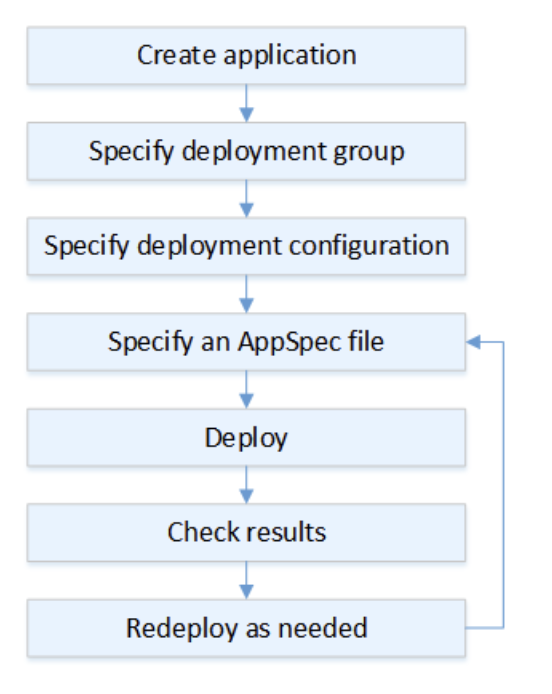AWS CodeDeploy for Lambda Development
Question
You work as a DevOps engineer for a company that focuses on Artificial Intelligence services.
Several Lambda functions are under development as part of the AI products.
You are in charge of the Lambda development via AWS CodeDeploy.
And every week, there is a new build waiting to be deployed online.
For CodeDeploy, there are several steps:
Answers
Explanations
Click on the arrows to vote for the correct answer
A. B. C. D.Correct Answer - D.
For the details on how to use CodeDeploy to work with AWS Lambda, refer to https://docs.aws.amazon.com/codedeploy/latest/userguide/deployment-steps.html#deployment-steps-lambda:
To use AWS CodeDeploy, the first step should be creating an application:
Options A and C are eliminated.
The next step should be creating a deployment group.
That is a step to specify configurations such as name, service role, deployment settings, etc.
Therefore the correct order should be 3-4-1-2 which is also the only option left.
Option A~C are incorrect: Refer to the above explanations.
Option D is CORRECT: Refer to the above explanations.

Sure, I can explain the steps involved in AWS CodeDeploy deployment process for Lambda functions.
The AWS CodeDeploy deployment process for Lambda functions consists of the following steps:
Preparation: In this step, AWS CodeDeploy prepares for the deployment by creating a new version of the Lambda function with the updated code. This step also includes defining the deployment configuration, which specifies the deployment strategy, and any required input parameters.
Deployment: In this step, AWS CodeDeploy deploys the new version of the Lambda function to the target environment. This step can use one of several deployment strategies, such as rolling, blue-green, or canary deployments, depending on the configuration specified in the preparation step.
Validation: In this step, AWS CodeDeploy validates the deployment by running tests against the new version of the Lambda function. The tests can include functional tests, integration tests, or performance tests, depending on the requirements of the application.
Traffic shifting: In this final step, AWS CodeDeploy shifts traffic from the old version of the Lambda function to the new version, based on the deployment strategy specified in the preparation step. This step can include gradually increasing the traffic to the new version, or routing a percentage of the traffic to the new version while maintaining the old version to ensure a smooth transition.
Now let's match the steps to the answer options:
Option A: 4-3-1-2 Traffic shifting (4) -> Validation (3) -> Preparation (1) -> Deployment (2)
Option B: 3-1-4-2 Validation (3) -> Preparation (1) -> Traffic shifting (4) -> Deployment (2)
Option C: 1-2-3-4 Preparation (1) -> Deployment (2) -> Validation (3) -> Traffic shifting (4)
Option D: 3-4-1-2 Validation (3) -> Traffic shifting (4) -> Preparation (1) -> Deployment (2)
From the explanation above, we can see that the correct answer is option D: 3-4-1-2.